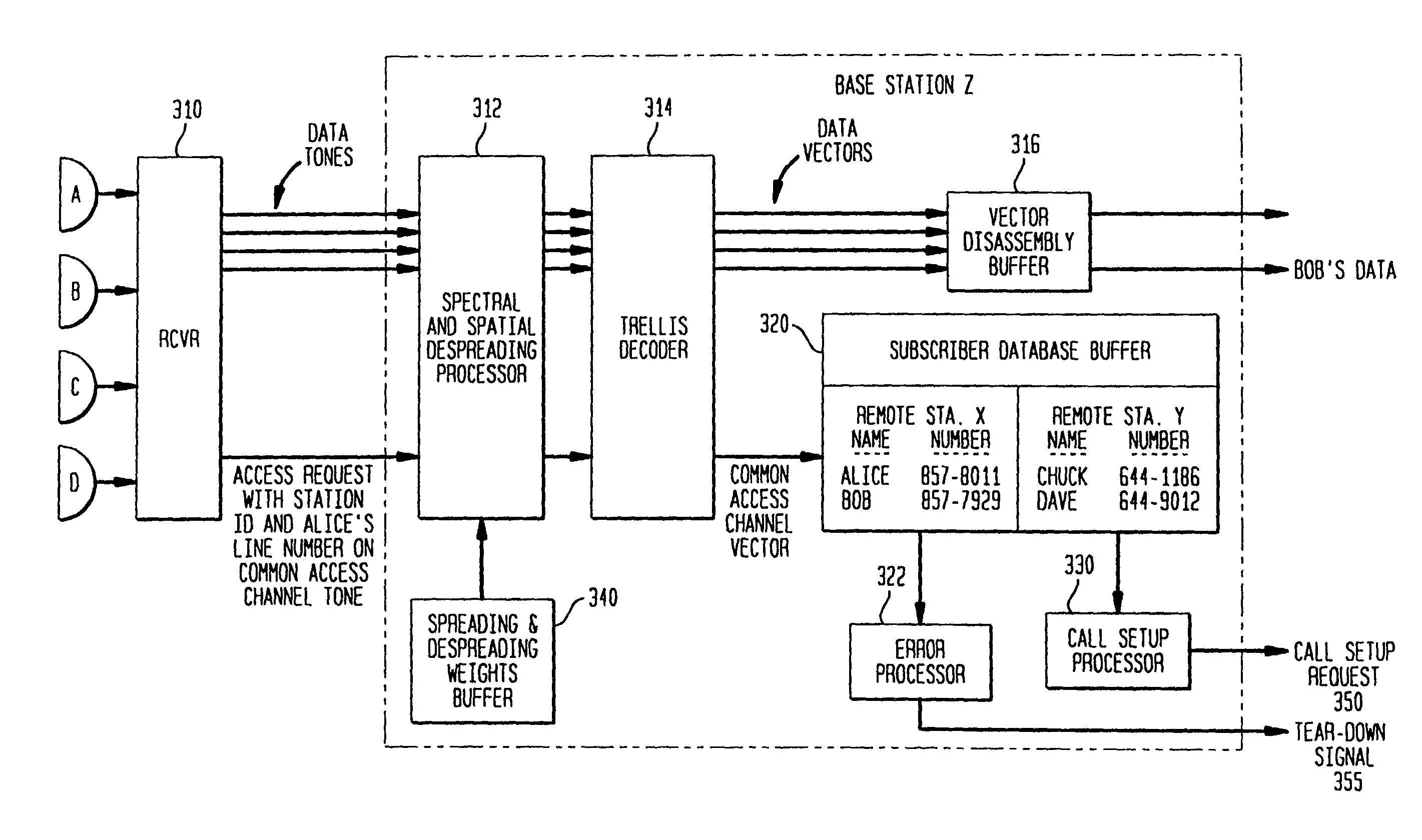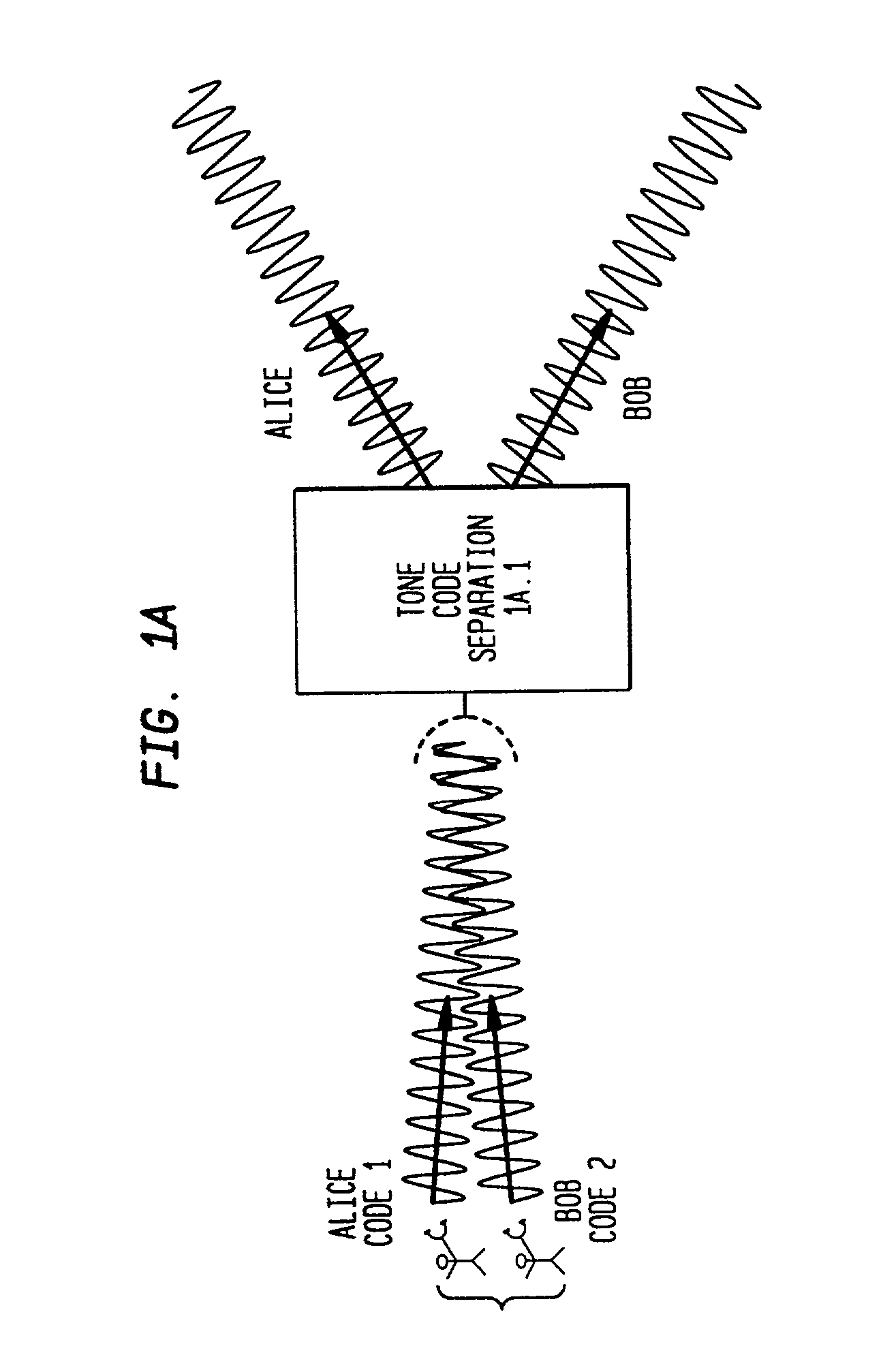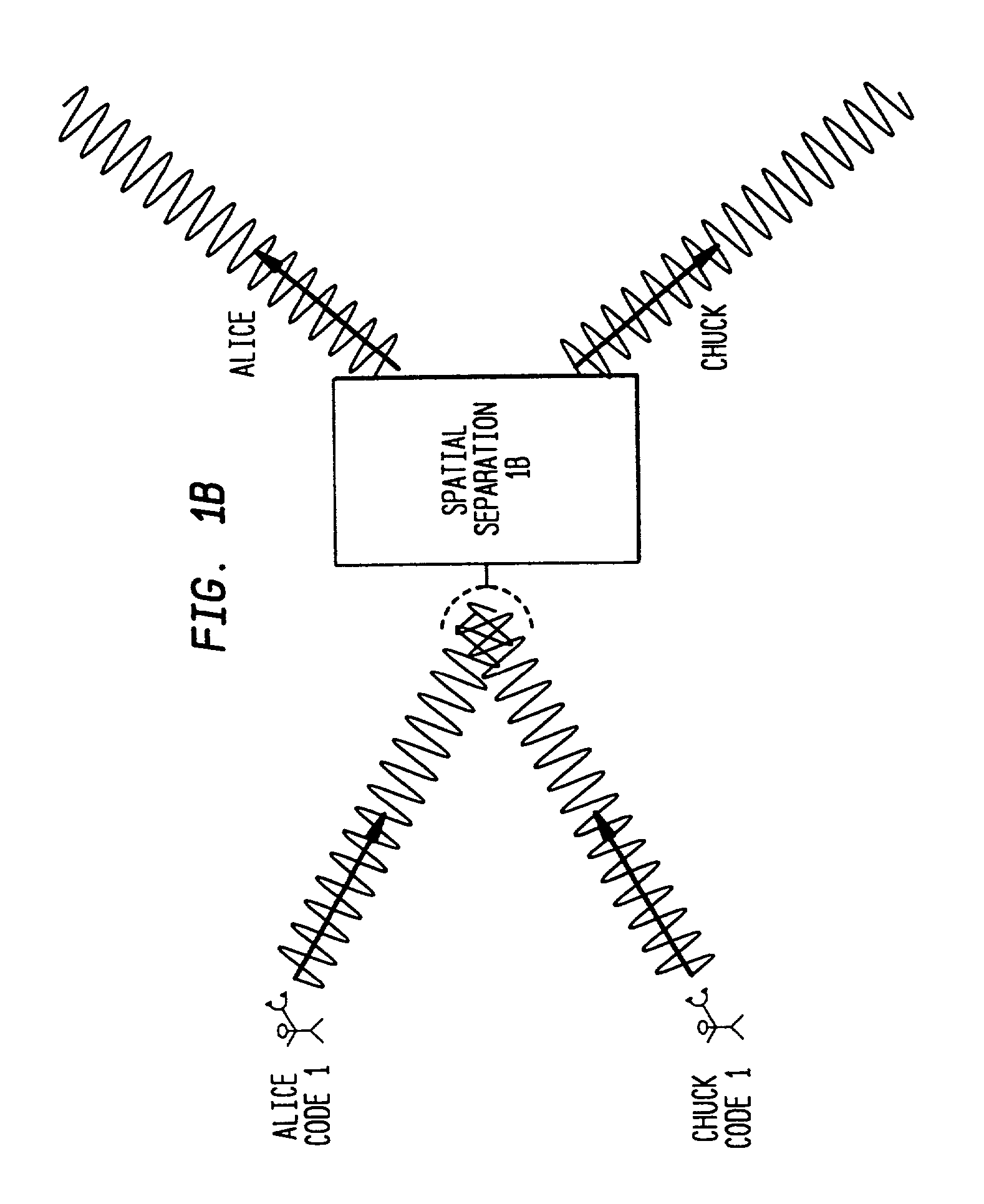[0045]One aspect of the invention is a method of communicating signals from at least two different spatially separated remote transmitters to a receiving base station having a multi-element antenna array. Each of the transmitters transmits signals representative of different information. In accordance with this aspect of the invention, the mathematical representation of the spectral characteristics of the signals is capable of being put in a mathematical form that is substantially the same as the mathematical representation of the spatial characteristics of signals received by a multi-element antenna array. This enables the receiver to efficiently process the received signals to simultaneously obtain adaptive spectral and spatial despreading and spreading weights that enhance the signal to noise and interference ratio of the signals. The receiver can then identify the data associated with each of the signals transmitted by the transmitters and can forward that data to the respective recipients. The term “spreading gains” can be used instead of “spreading weights”, to emphasize the meaning that their values are adaptive and can vary in magnitude.
[0047]In another aspect of the invention, the spectral portions of the despreading weights are adaptively adjusted in value at the receiving station to improve the quality of the received signal. This process is referred to as adaptive code nulling. When the spreading codes used to spread distinct data signals are orthogonal, interference in the channel can be removed from the spread data. However, when the spreading codes are not orthogonal, which may be the case with spreading codes that are used in neighboring spatial cells, cross modulation may result so that the data signals are not able to be precisely distinguished by simple despreading. In order to compensate for this phenomenon, code-nulling weights are multiplied by the received signal. By nulling out the cross modulation present in the received signal, the appropriate values of the data bits are output by the receiver. The adaptive code nulling procedure may be implemented during the derivation of the overall despreading weights that maximize the signal quality.
[0048]In another aspect of the invention, the spatial portions of the despreading weights are adaptively adjusted in value at the receiving station so that the spatial directions of low gain or the null regions of the receiver are adaptively positioned in a pattern so that the nulls are directed towards known interfering signal sources. In this manner, interfering signals are de-emphasized in the spatial domain. This “null steering” procedure may also be implemented during the derivation of the overall despreading weights that maximize the signal quality.
[0050]In another aspect of the invention, the signals are transmitted in time division duplex format—e.g. a format in which base to remote signals are transmitted in different time periods than remote to base signals. In one embodiment of this aspect of the invention, a first plurality of received signal bursts separated by first-burst time-guard time-periods, are received by the receiving station. This is followed by transmission by the receiving station of a second plurality of transmitted signal bursts separated by second-burst time-guard time-periods. The first and second bursts are separated by an interburst time-guard time-period that is larger than either the first-burst time-guard time-period or the second-burst time-guard time-period. The interburst time-guard time-period is sufficiently large to reduce interference between signals received by the receiving station and signals transmitted by other receiving stations.
[0051]Another aspect of the invention is the application to wireless communications of the mathematical analogy that may exist between the representation of data that has been spectrally processed in accordance with certain multiple access techniques and data that has been spatially processed by a multi-element adaptive antenna array. Applicants find that because of this analogy these analyses can be combined in a unified mathematical operation. This greatly simplifies the calculation of optimal operating parameters, including spreading codes, and permits identification of the signals associated with each individual user. Accordingly, in this aspect of the invention the dynamic, real-time calculation of the most desirable operating parameters for high-bandwidth efficiency, and the identification of each user's signal, becomes more economical, despite the fact that a plurality of multiple access techniques are used.
[0052]In one aspect of the invention, applicants show that spreading a signal over a set of weighted tones in DMT-SC is one multiple-access spectral-processing format that resembles the format of data that is processed by a multi-element adaptive antenna array. Accordingly, in an embodiment of the invention, space division multiple access (SDMA) using multi-element adaptive antenna array techniques is combined with DMT-SC to obtain significant calculational advantages.
 Login to View More
Login to View More  Login to View More
Login to View More 


